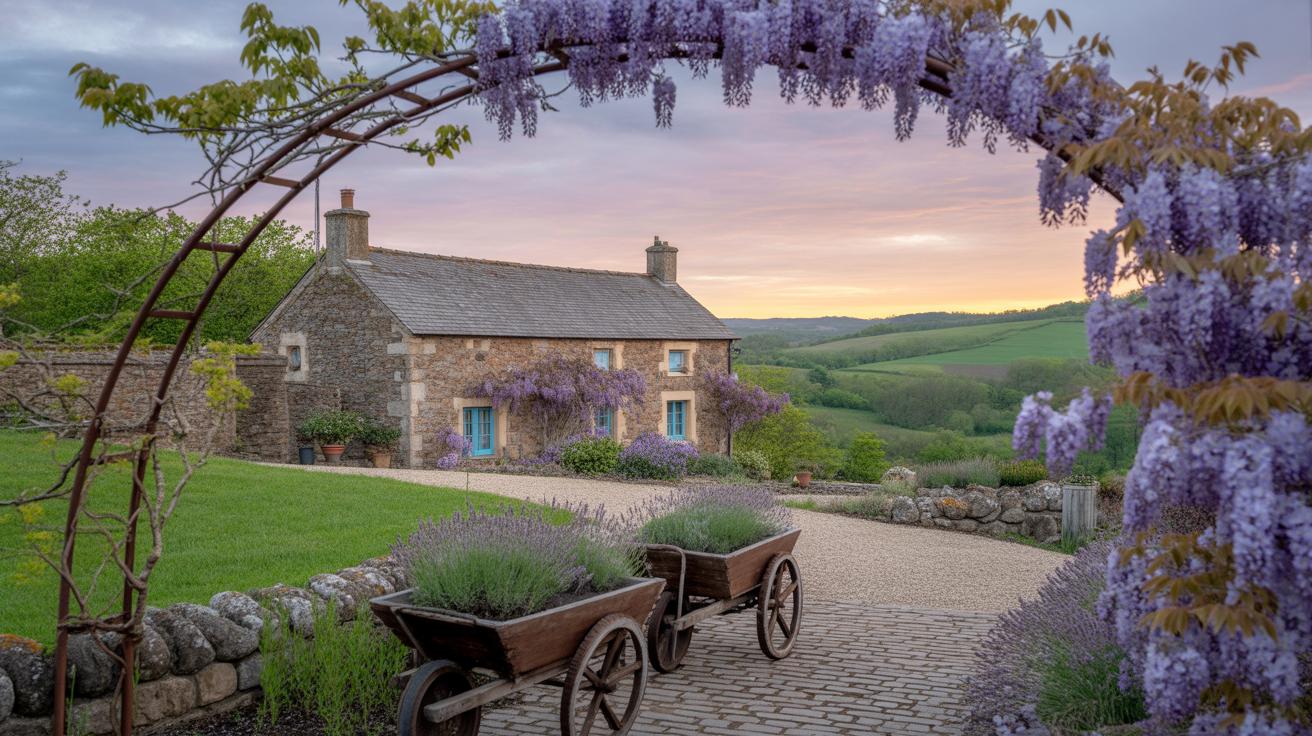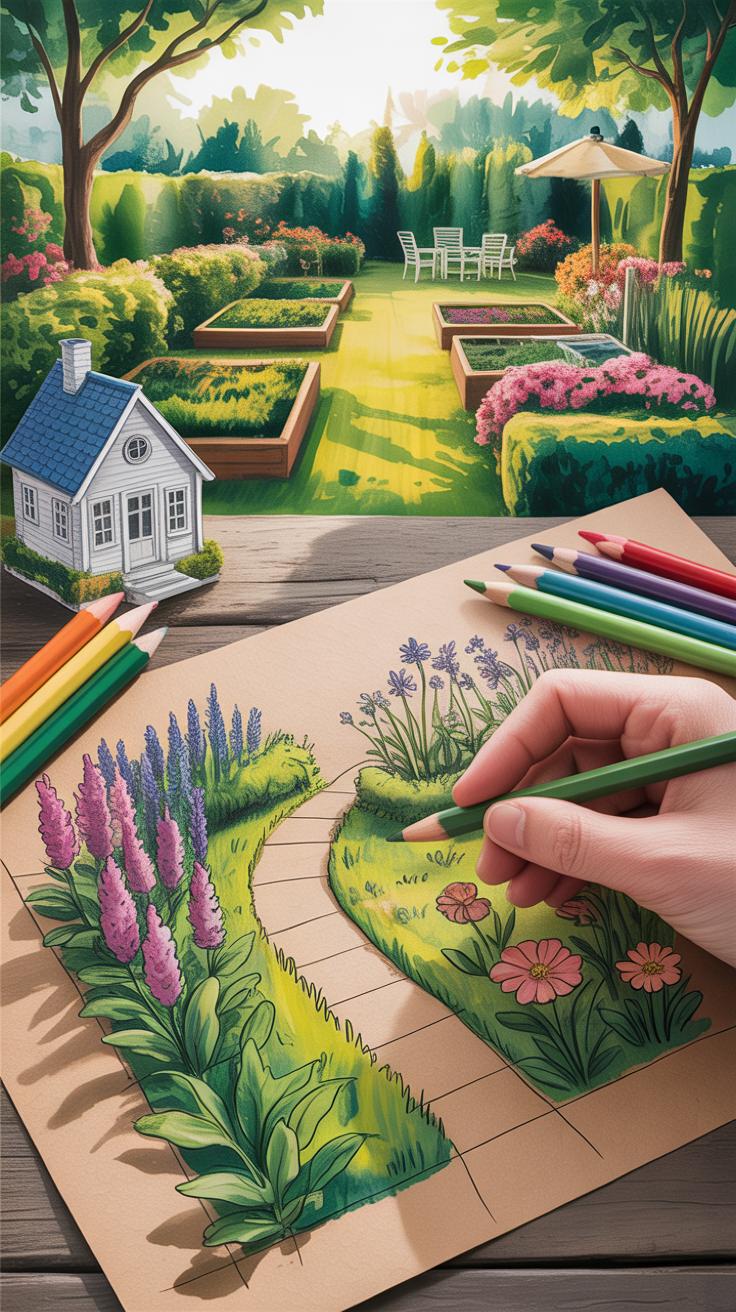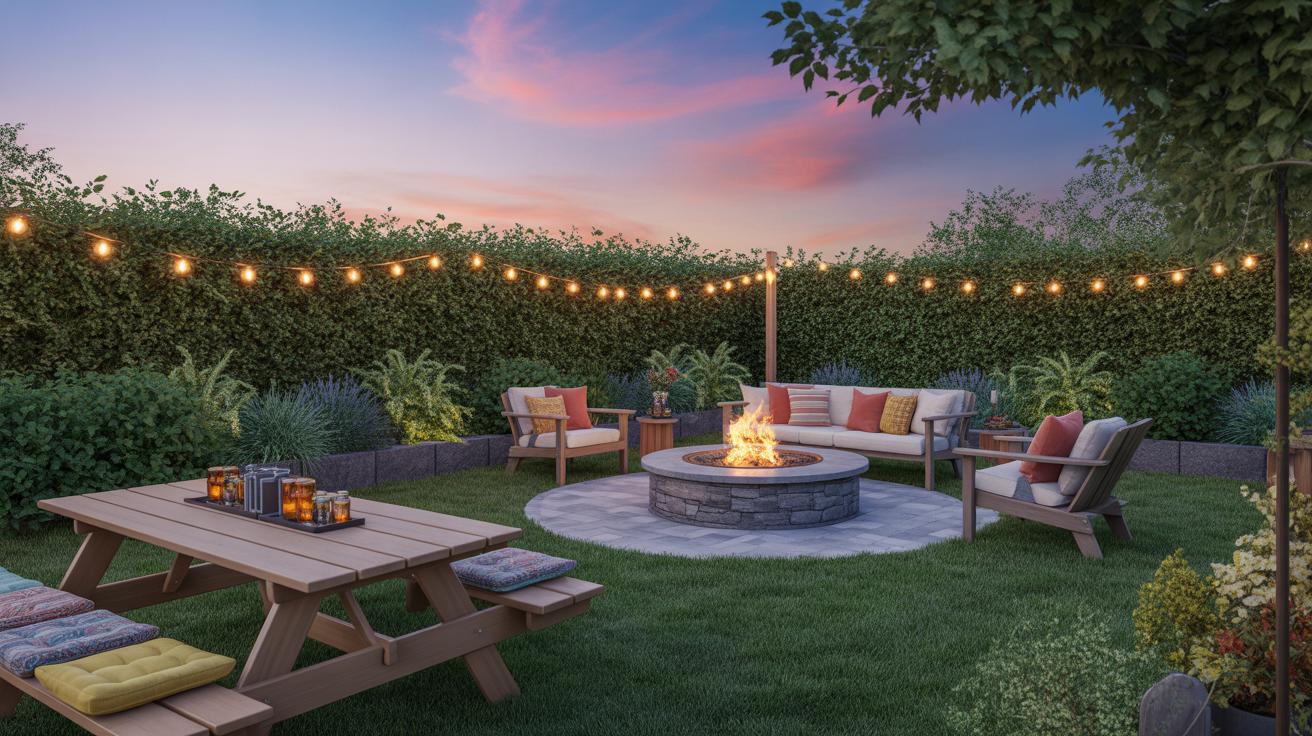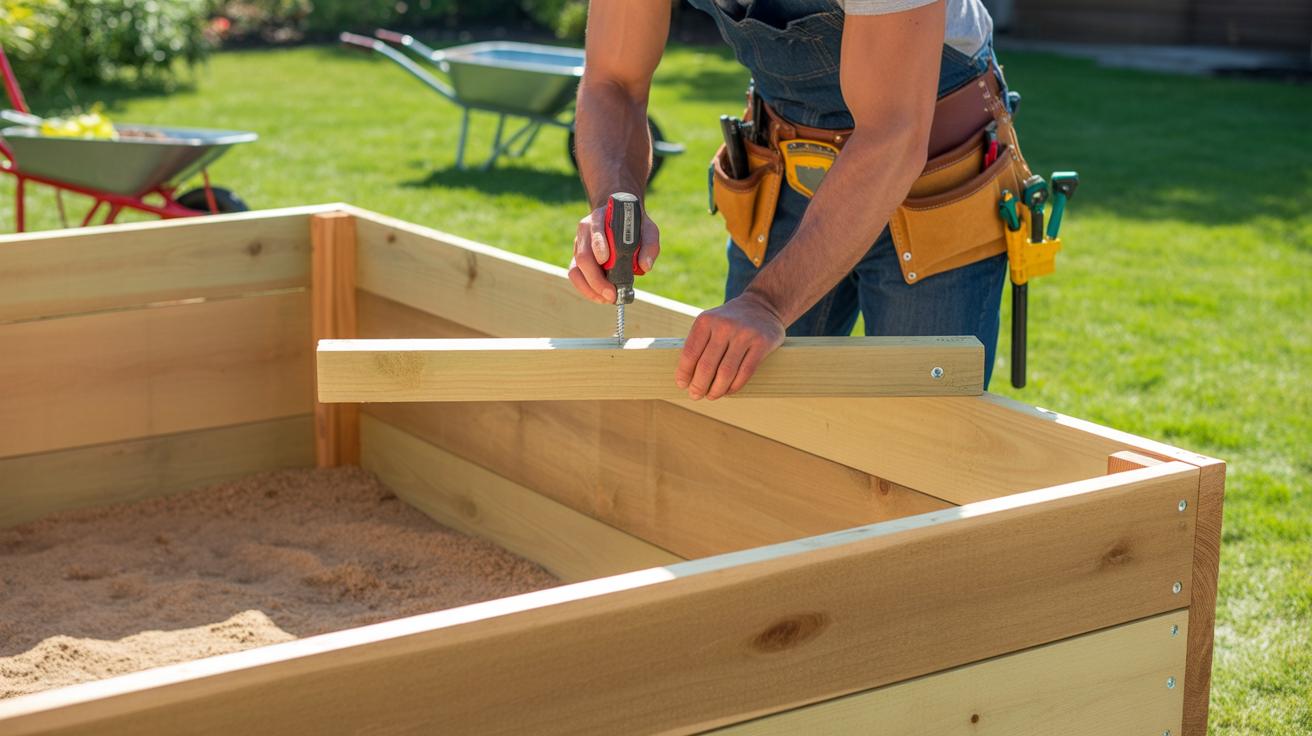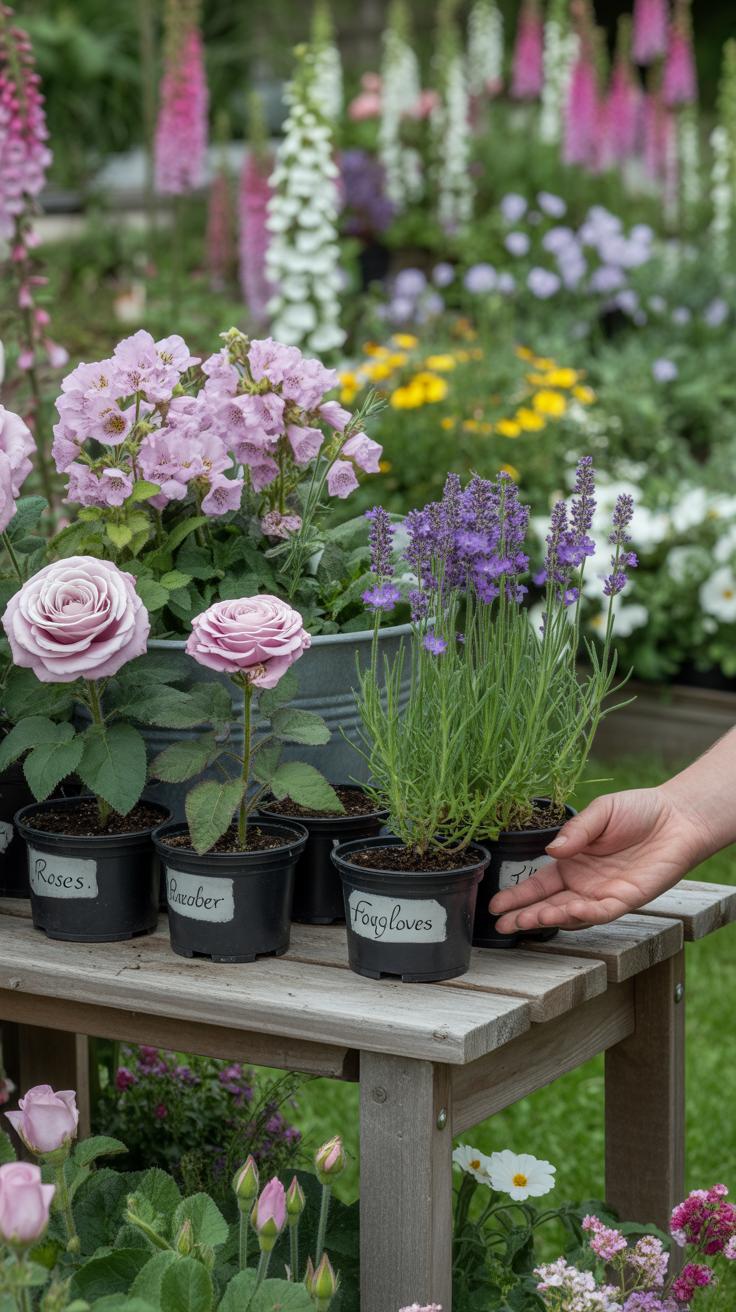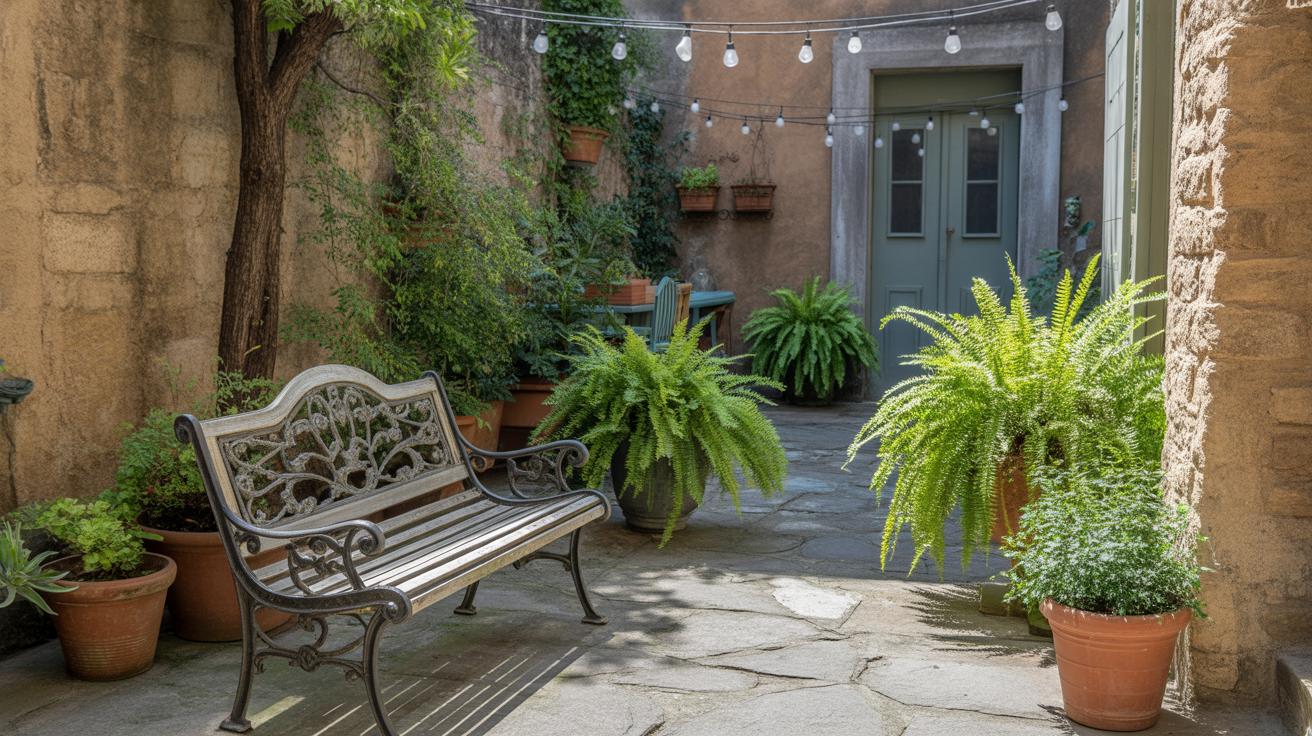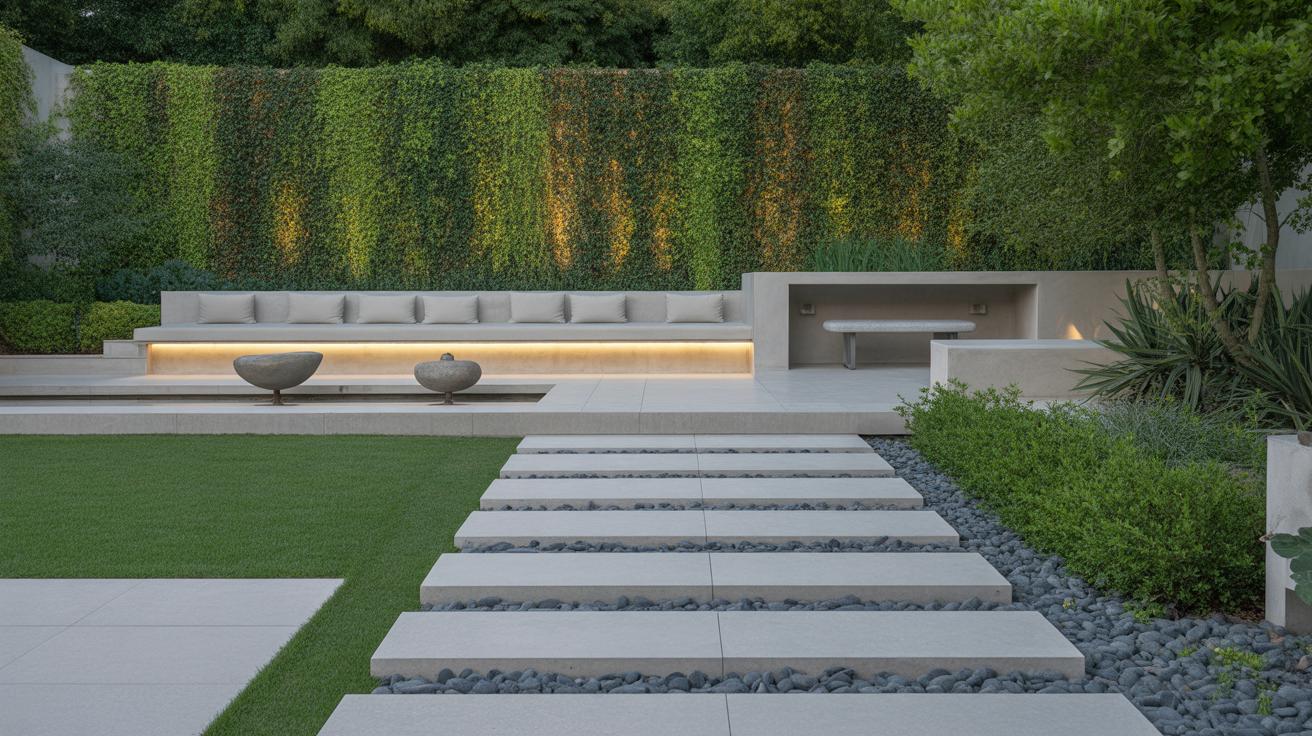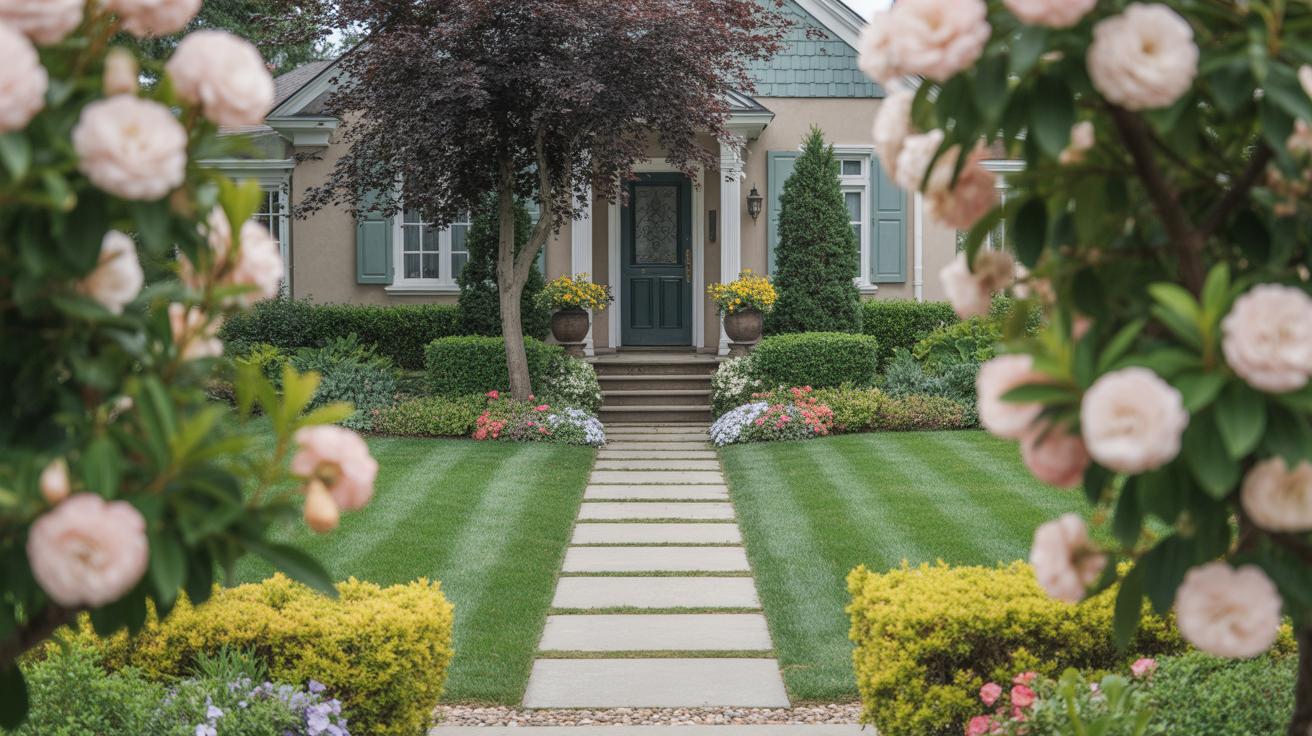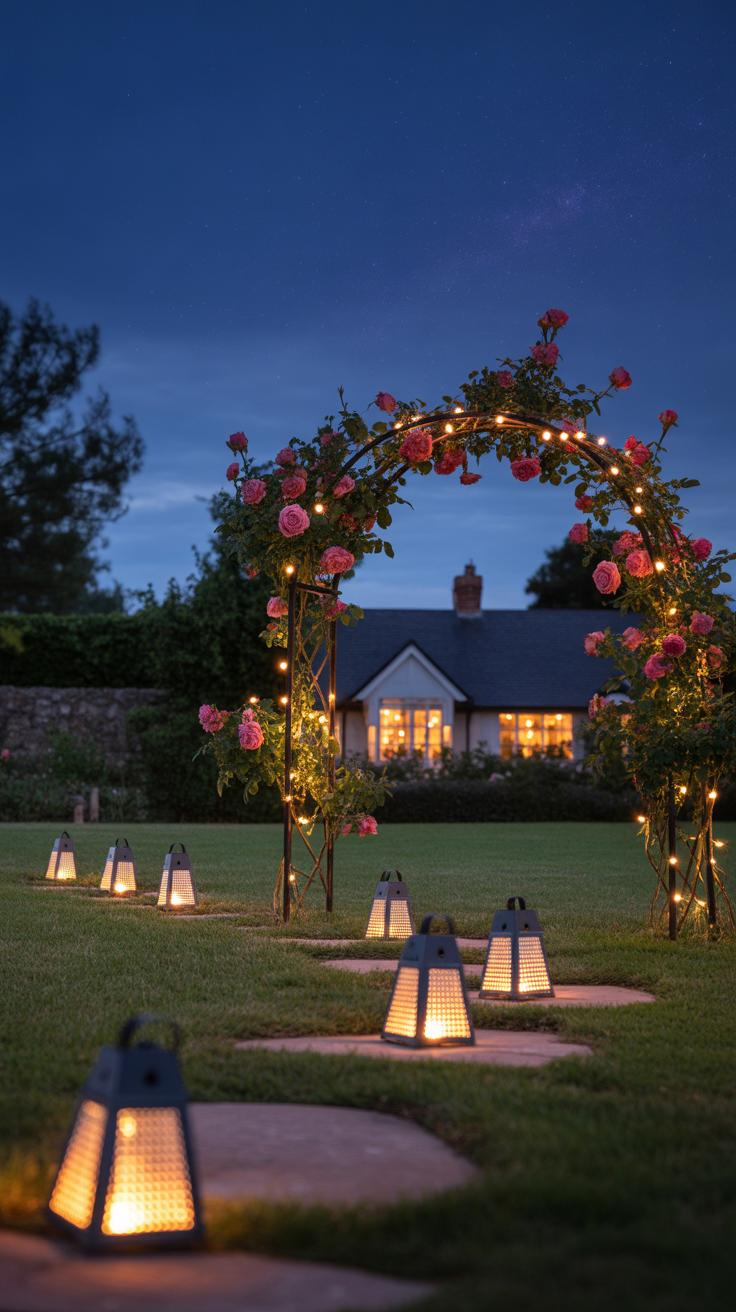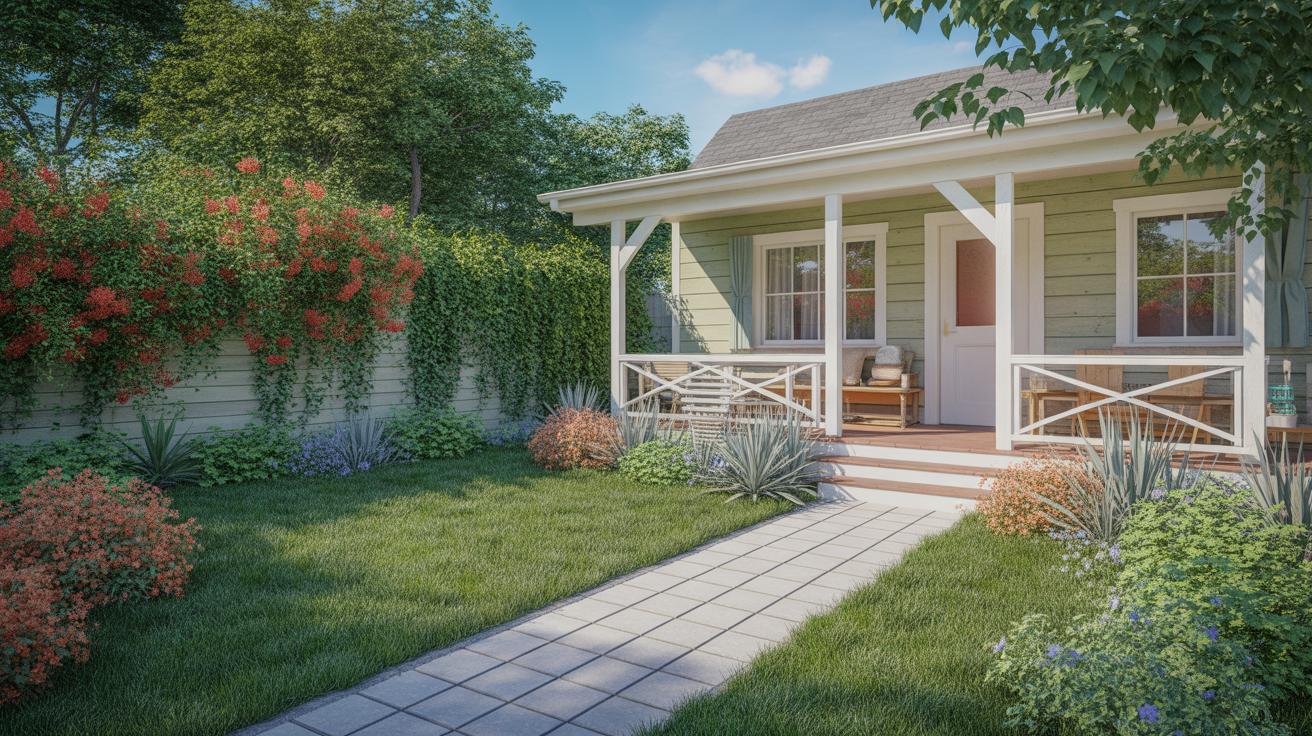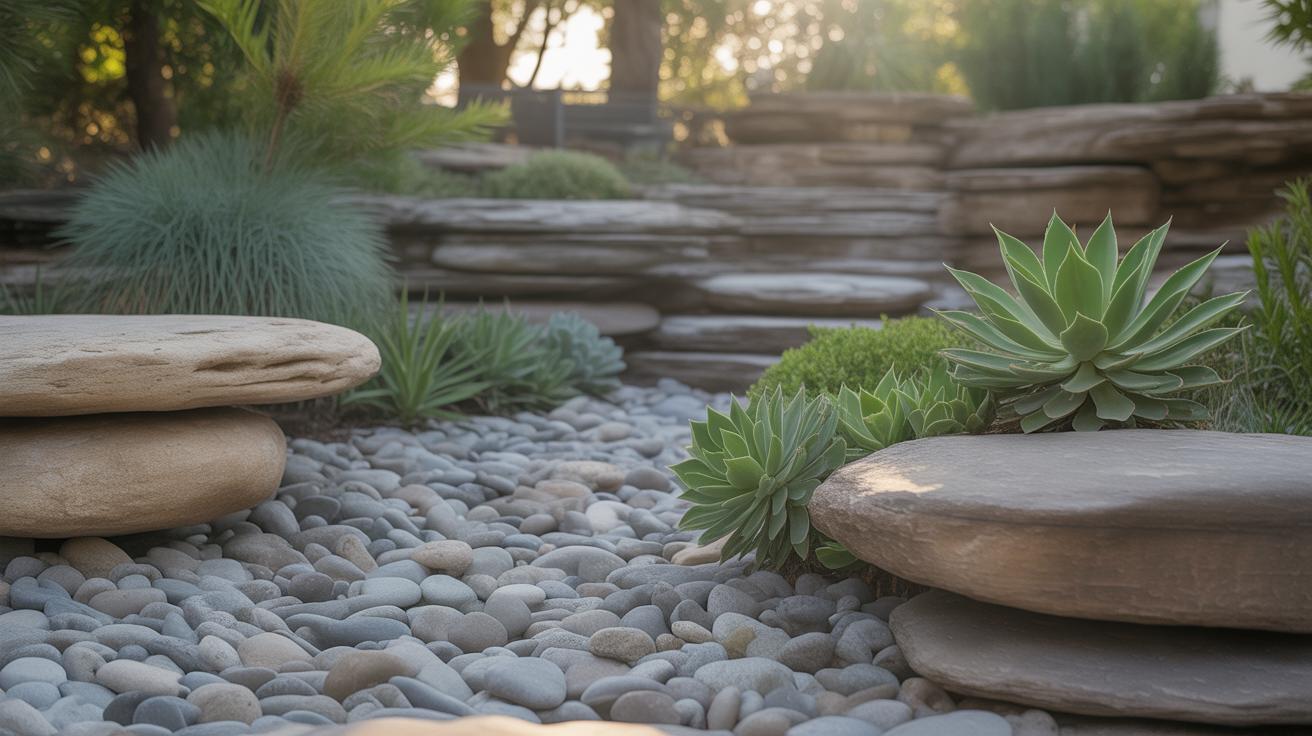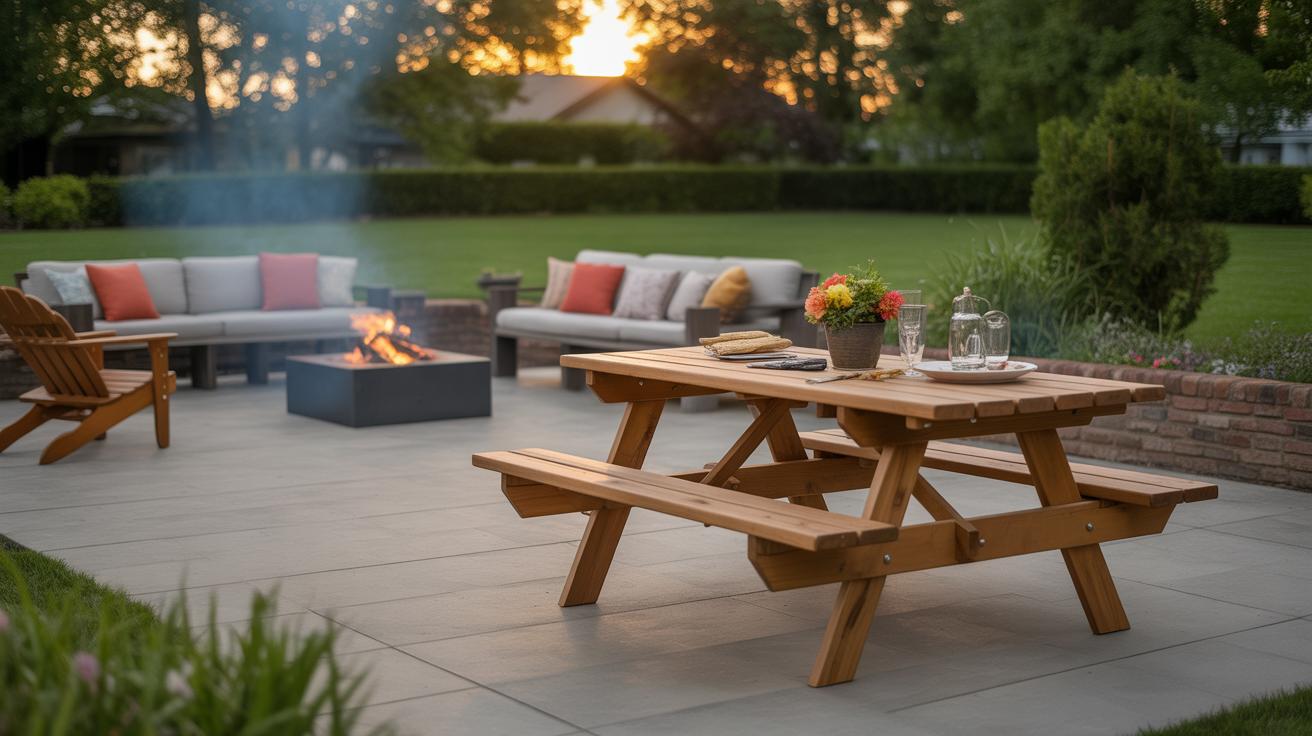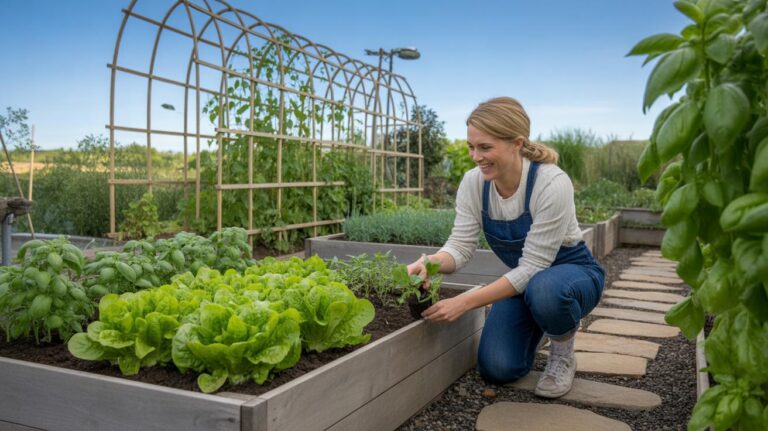Introduction
A garden cottage offers a unique blend of charm and functionality that few other home styles can match. Quaint Garden Cottage Home Styling Ideas focus on embracing this blend to enhance both the aesthetic appeal and the practical use of your garden area and the cottage itself. Whether you are looking to decorate a small garden space or revamp the cottage exterior, understanding the styling essentials can help you create a welcoming environment that reflects your taste.
This article explores various styling tips, including how to incorporate traditional cottage garden elements and modern touches. You will learn how to design spaces that feel cozy and inviting, while also being useful for gardening and daily living. Let’s delve into how you can turn your garden cottage into a delightful retreat.
Planning Your Garden Cottage Layout
When it comes to planning your garden cottage layout, start by really looking at the space you have. The size of your garden makes a big difference in what you can do. Small gardens don’t need to feel cramped — think about how pathways can create a sense of flow and discovery rather than just dividing the space.
Sunlight is another key factor. Some plants thrive in shade, others need full sun, so try to place your herbs and veggies where they’ll get enough light. You might find that certain spots near windows or doors get better sun at certain times of day, which can shape where you plant.
Consider how indoor and outdoor spaces connect. Having an easy transition between your garden and the cottage itself encourages you to step outside more often. Maybe a small patio or a gate that opens directly from your kitchen can make all the difference.
- Map out your garden’s sunlight patterns throughout the day.
- Plan winding or irregular paths to add charm and lead visitors through the space.
- Use traditional materials like stone or gravel for pathways and edging to keep that cottage feel.
- Think about multi-functional spots: a bench that’s both seating and a planter, or a trellis doubling for shade and growing peas.
In smaller gardens, layering plants vertically—such as hanging pots or wall-mounted planters—can really open things up. This also adds that characteristic dense planting you expect in a cottage garden, without taking up too much ground space.
Planning isn’t just about fitting plants; it’s about creating moments. Places to pause, spots that surprise you with a splash of color, or a hidden corner with herbs within arm’s reach of the kitchen. Each choice shapes how you experience your garden cottage every day—and sometimes the best layouts come from a bit of trial and error, or inspiration from a favorite walk or garden you’ve visited.
Garden Cottage Layout
When planning your garden cottage layout, start by really looking at the size and shape of your garden. Small gardens can feel cramped if you don’t think through the pathways and seating areas carefully. Sometimes, less is more—even a narrow space can feel inviting with a simple winding path and a cozy bench tucked away.
Sunlight is another key factor. Which parts of your garden get the most light? Maybe the sunny corner is perfect for growing herbs, while shadier spots work better for a leafy seating nook. Mapping out these zones beforehand saves you from awkward redesigns later, though you might find yourself tweaking as the seasons change.
Paths matter, too. They guide you through the space and invite exploration. A gravel or flagstone pathway can feel informal but defined, which fits the garden cottage vibe nicely. Think about how you’ll move between the house and garden—direct access encourages you to actually use the outdoor space.
Linking indoors and outdoors is where the magic often happens. I’ve noticed that patios just outside French doors blur the line between rooms and garden. Window boxes add charm and color at eye level, making the garden feel closer even when you’re inside. Even a simple deck or paved area can connect the two in a very natural way.
Assess your needs honestly. Do you want a place for morning coffee? A spot to grow edible plants? Or a quiet reading corner? These choices should shape your layout. Sometimes goals conflict—what if you want a big vegetable patch but also plenty of seating? Finding a balance is part of the process, maybe even a gradual one.
Small gardens can feel larger if you arrange spaces thoughtfully. Try creating layers: a low herb garden near a raised flowerbed, or a seating area that looks over both. Paths don’t have to be straight; a curved path or stepping stones can add interest and make the space feel larger. You may hesitate to try it, but a little asymmetry often works best.
Choosing Plants for Your Garden Cottage
Picking plants for your garden cottage can feel a bit overwhelming—there’s so much to choose from. Yet focusing on easy-care herbs, flowers, climbing plants, and even some vegetables can bring that perfect mix of charm and practicality. Think of plants that don’t demand constant fuss but still offer seasonal color and sweet scents. Herbs like lavender and rosemary fit well here—they add fragrance and are surprisingly hardy. Plus, having fresh herbs near your kitchen is always handy.
When selecting flowers, old-fashioned roses, primroses, and violets stand out. They look timeless and blend effortlessly with that cozy cottage appeal. They’re not overly demanding, either, though roses might need a bit of pruning now and then. Violets and primroses bring pops of gentle color and tend to reseed themselves, which is kind of nice—letting the garden evolve quietly without you having to intervene too much.
For vertical interest, climbers like hollyhocks or clematis are perfect choices. Hollyhocks have this rustic, slightly wild look. Clematis can bloom through different times of the year, which helps keep things lively. These can cover a fence or trellis and add layers of life to your garden space. Perennial plants also work well—they return year after year and build texture, so your garden isn’t just color one season and bare the next.
What about vegetables? Even in a small garden, easy-care ones like bush beans, cherry tomatoes, or lettuces can fit in. They’re practical and add freshness to your meals. Plus, watching them grow connects you to the garden in a simple, rewarding way.
In all, the goal is a mix that offers interest throughout the year, is simple enough for you to maintain, and smells nice enough to invite you outside whenever you can. Have you thought about how your garden’s scent might shape your experience there? Sometimes that subtle fragrance is just the thing that makes a small garden feel like a true retreat.
Garden Structures That Add Character
Garden cottages often feature charming structures that do more than just decorate—they shape how you use the space. Take rose bower gateways, for instance. They create a sort of natural entrance, inviting you in with softly climbing roses or clematis. There’s something about stepping through a flowering arch that feels like crossing into a special place, even if it’s just your own backyard. I find it hard not to linger for a moment beneath those blooms.
Fences are another common element. They don’t just enclose an area; they provide a backdrop for plants and create a sense of coziness. Whether painted white or left rustic, fences can subtly direct your eye or shield less tidy corners. They’re practical yet contribute personality without overwhelming.
Trellises serve a dual purpose. They support climbing plants, letting vines grow upward rather than sprawling on the ground. At the same time, they add vertical interest where space is tight—sort of like living, green walls. I’ve seen spaces where a simple trellis completely changes the feeling, making the garden feel fuller and more layered.
Then there are small sheds, often tucked into a corner but never purely utilitarian. These store tools and supplies out of sight, but with a bit of paint and minimal trim work, they fit right into the cottage vibe. Sometimes, a shed can be a mini focal point, with a weathered surface and a few pots resting on the roof edge. It’s practical, yes, but also quietly charming—reminding you that the garden is cared for.
All these structures mix function with appeal, shaping the garden cottage into a space that feels both lived-in and inviting. They make you wonder: what’s missing if there’s no little gate or trellis? Could your garden be just a bit more yours with one of these humble features?
Creating Cozy Outdoor Seating Areas
When setting up seating in your garden cottage, simplicity often wins. Think of using natural materials like untreated wood or wrought iron for benches and chairs. They age well, blending into the surroundings instead of sticking out awkwardly. A wooden bench with rough edges, for example, can feel more welcoming than something too polished or modern.
Choosing the right furniture means balancing comfort and style. Wood offers warmth and can be softened with cushions, while wrought iron brings a bit of vintage charm but might need cushions to soften the cold feel. I’ve found that small, sturdy tables paired with a couple of chairs create perfect nooks for tea or a book, without overcrowding the space.
Consider how you arrange seating. Angling benches toward each other invites conversation, while placing a chair near flowering plants can create a lovely private corner. Soft cushions in neutral or muted colors work best—they don’t compete with the garden but still add comfort. Surrounding your seating with potted plants or climbing vines not only boosts privacy but also makes the area feel part of the garden rather than separate from it.
Incorporating Practical Elements in Your Garden
Making your garden cottage practical doesn’t mean it has to lose its charm. In fact, blending usefulness with visual appeal can be quite satisfying. Growing herbs and vegetables in small beds or containers is a great way to do this. For example, a backyard windowsill with pots of basil, thyme, or cherry tomatoes can brighten the space and supply fresh ingredients right at your fingertips. Raised beds often feel less like a chore too—they’re neat, easy to manage, and can be designed to fit the garden’s natural curves.
Tool storage is another challenge that’s worth thinking through carefully. Imagine a vintage wooden shed tucked into a corner, its patina blending with the greenery, yet inside, everything has its place. Or perhaps a garden bench with hidden compartments where you can stash gloves, trowels, or seeds—this doubles as seating and storage, keeping clutter out of sight. These details might seem small, but they make daily gardening less of a hassle and keep the area inviting. Would a tidy space encourage you to spend more time outside? Maybe so. After all, practicality doesn’t always shout—it can whisper through clever, subtle design.
Lighting Your Garden Cottage Space
Lighting a garden cottage is a bit of a balancing act. You want enough light to feel safe when walking around after dark, but it shouldn’t overpower the calm and cozy vibe. Solar lights have grown on me over time—they’re easy to install and don’t need wiring. Just place them along pathways or near seating areas where they catch the sun during the day and glow softly at night. They provide practical, hands-off lighting without fuss.
Lanterns offer something a bit more tangible and decorative. I like how they can sit on tables or hang in nooks, casting flickering shadows that feel comforting. Try glass or metal lanterns with LED candles for safety, especially if you want to avoid open flames. Someone once told me they even use lanterns as a gentle nightlight when spending late evening hours outside, which sounds quite nice.
Then there are fairy lights. They’re small but have the power to transform an ordinary spot into a magical one. Draped over a pergola, woven through shrubs, or wrapped around a porch railing, they invite you to linger longer outside. Their light is soft, almost like a whisper, encouraging calm evenings without harsh glare.
Choosing Safe and Soft Lighting
It’s tempting to flood your garden cottage with bright lights, but that often detracts from the natural charm. Instead, focus on low-level lighting that gently guides the way. Something that—well—feels like it’s glowing rather than glaring.
Consider placing lights low to the ground for pathways, maybe in hidden spots behind plants or bricks. Solar stake lights or small LED ground lights can work well here. For seating areas, lanterns with warm bulbs offer mellow illumination, enough to read by but not so much that it feels clinical. Soft white or amber tones usually feel less harsh—your eyes will thank you.
Decorative Lighting Ideas
Lanterns aren’t just practical—they also add character. They come in styles from rustic iron to delicate paper, making it easy to match your garden cottage’s personality. Group a few on a table for an inviting centerpiece, or hang them from tree branches if you have them nearby.
String lights also deserve a spot here. Unlike ordinary bulbs, the smaller ones are less intense and more about atmosphere. Wrap them around a wooden beam or fence, or weave them through flowering vines. You might find yourself stepping outside just to watch their glow for a few extra minutes in the evening—it’s sort of hypnotic, really.
Could lighting even influence how you use your garden cottage after dark? I think so. With the right touch, it can feel less like stepping into an outdoor workspace and more like a restful retreat.
Maintaining Your Garden Cottage
Keeping your garden cottage looking fresh and welcoming doesn’t have to be a big chore. A few simple routines can make a real difference and help your plants stay healthy.
Basic Care for Plants
Watering is key, but it’s tricky sometimes—plants need enough to thrive, but too much can be just as bad. A good rule is to water early in the morning or later in the evening to reduce evaporation. You might notice some plants prefer deep watering once a week rather than daily light sprinkles.
Deadheading, or removing spent flowers, helps plants put energy into new growth instead of seed production. It sounds tedious, but it actually keeps blooms coming longer through the seasons. Seasonal tasks like mulching in spring and protecting tender plants in colder months also play a crucial part.
Keeping the Area Tidy
Paths and patios can get cluttered with leaves and dirt, so sweeping regularly avoids slips and keeps things neat. I tend to overlook weeds until they’re a problem. But snipping them out early saves effort and stops them from stealing nutrients.
Garden furniture often gets dusty or stained from morning dew or rain. Wiping it down every few weeks—sometimes just with soapy water—is enough to keep it inviting. It’s a simple step that I sometimes forget but appreciate when done.
Pests occasionally visit, but you don’t have to panic. Watching plants closely helps you catch issues early. Some natural solutions, like neem oil or simply rinsing leaves with water, can control pests without harsh chemicals.
Personalizing Your Garden Cottage
Your garden cottage is a canvas waiting for your touch. When it comes to making it truly yours, think beyond just furniture or paint colors. Small, personal details quietly shape the space, giving it character and a story.
Maybe you have some family heirlooms tucked away—a vintage lantern or an old wooden crate. These items don’t have to stand out loudly, but they add a sense of history and warmth. Handmade decorations work well here too. A simple macramé hanging, a hand-painted sign, or even some DIY garden markers bring personality without fuss.
Consider unique decor pieces like painted pots in your favorite shades, or a bird feeder you crafted yourself. Wind chimes can add a gentle soundtrack, and you might find their occasional creaks comforting even if they’re not perfectly tuned.
As for plants, they can become storytellers. Choose varieties that have personal meaning—perhaps the rose bush your grandmother once grew, or a rare succulent you discovered on a trip. These selections often spark conversation and keep your garden alive with memories.
Instead of sticking to the usual garden staples, why not try something less common? An unusual herb, a flower with distinct foliage, or even a quirky cactus can hint at your taste and the small adventures you’ve taken.
What small things tell your story? What would you miss if they weren’t there? That’s the heart of personalizing a garden cottage—layering it with what means something to you, even if others might not notice right away.
Conclusions
Styling a garden cottage calls for balancing tradition with your personal preferences. Through thoughtful choices in garden plants, furniture, and decor, you create a space that is both beautiful and functional. The ideas shared here emphasize making your garden cottage an extension of your home that serves your lifestyle and aesthetic.
Remember, your garden cottage is more than a structure; it is a place for relaxation and connection with nature. Paying attention to small details like plant selection and outdoor seating can transform your space. Now it’s your turn to take these ideas and craft a garden cottage that is all your own.

